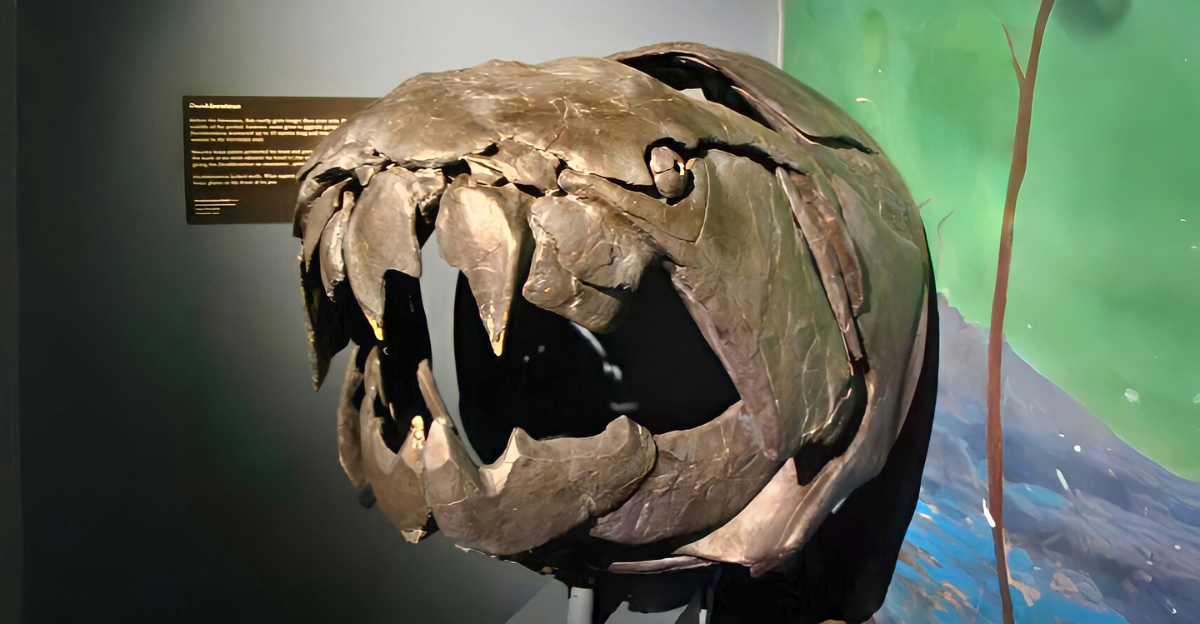
Dinosaurs often steal the spotlight in prehistoric tales, but they weren’t the only fascinating creatures to roam ancient Earth. Before, during, and after the age of dinosaurs, a host of bizarre animals evolved, each with unique adaptations that challenge our understanding of life’s history.
From armored fish to giant insects, these creatures showcase the diversity and creativity of evolution. Their unusual features might seem alien today, but they were perfectly suited to their environments at the time.
Let’s journey through time to discover nine prehistoric animals whose strangeness rivals, and perhaps surpasses, that of any dinosaur.
1. Opabinia — The Five-Eyed Enigma
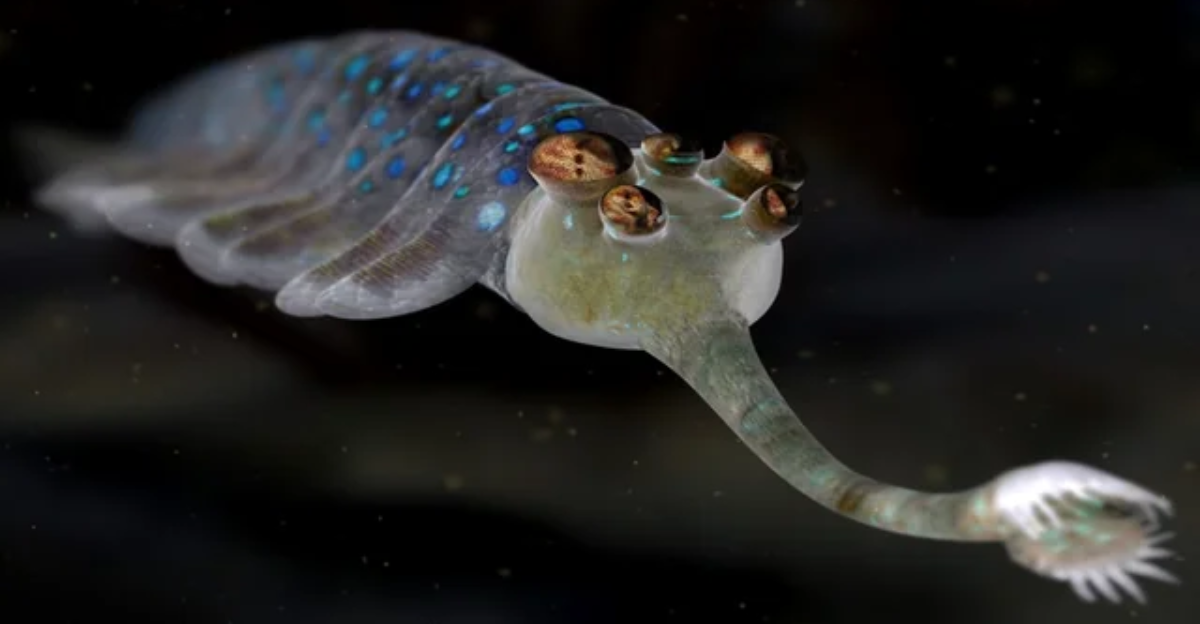
Opabinia is one of the most peculiar creatures from the Cambrian period. Measuring about 7 centimeters long, it had a soft body, five eyes, and a backward-facing mouth located beneath its head. Its most distinctive feature was a long, flexible proboscis ending in a claw-like structure, likely used to grasp food and bring it to its mouth.
Discovered in the Burgess Shale of British Columbia, Opabinia’s anatomy puzzled scientists for years. Its unique combination of features doesn’t resemble any modern animal, making it a subject of fascination in evolutionary studies.
Opabinia exemplifies the experimental nature of early animal evolution, showcasing forms that have no direct modern counterparts.
2. Helicoprion — The Buzzsaw-Jawed Fish
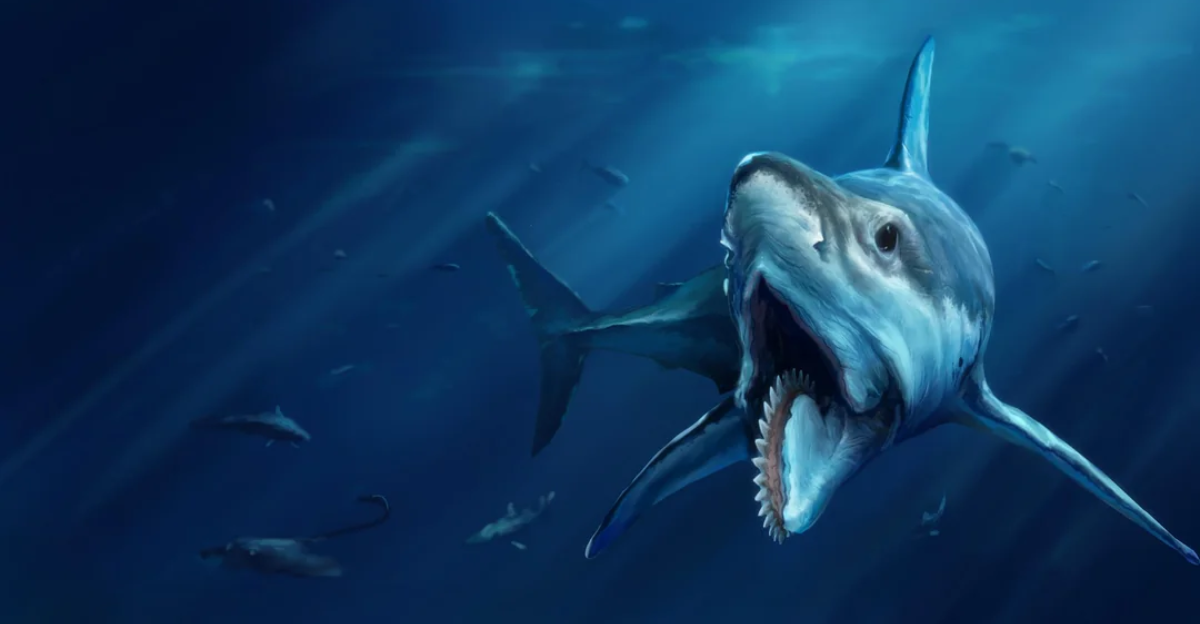
Helicoprion was a prehistoric fish known for its unusual spiral arrangement of teeth, resembling a circular saw. This “tooth-whorl” was located in the lower jaw and consisted of numerous teeth that grew in a continuous spiral, with new teeth forming at the center and older ones pushed outward.
For years, the placement and function of this tooth-whorl baffled scientists. Recent studies suggest it was used to slice through soft-bodied prey like squid. Helicoprion lived during the Permian period and could grow up to 10 meters in length.
Its unique dental structure sets Helicoprion apart as one of the most bizarre marine predators in Earth’s history.
3. Anomalocaris — The Original Apex Predator
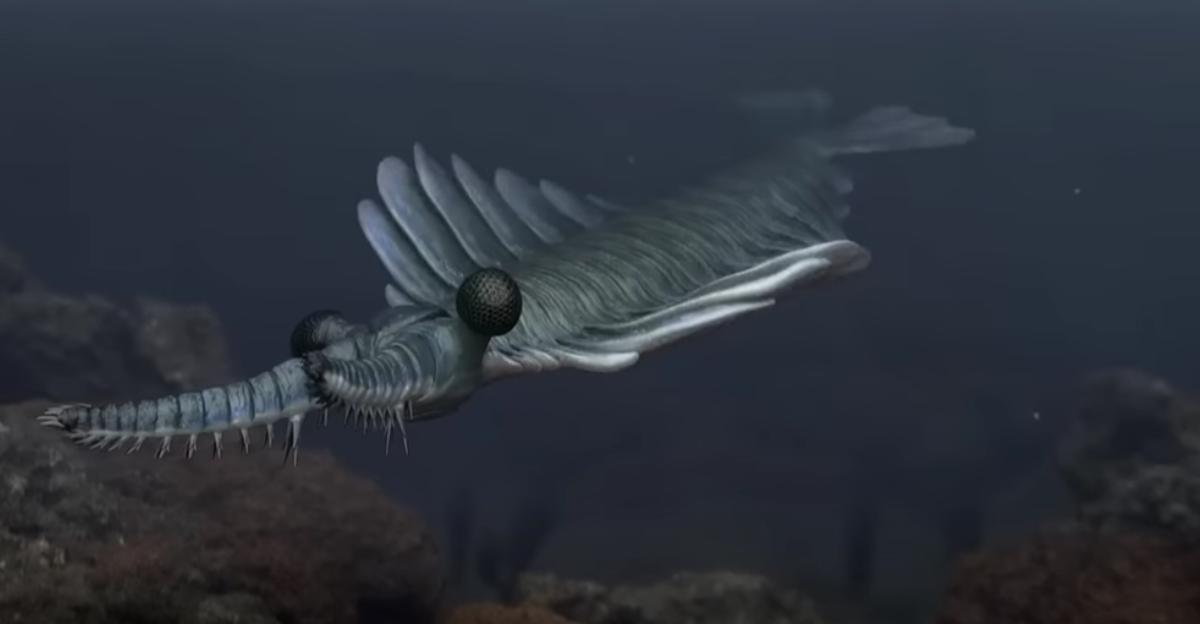
Anomalocaris, meaning “unusual shrimp,” was a dominant predator of the Cambrian seas. It could reach lengths of up to 1 meter, making it one of the largest animals of its time. With large, compound eyes, a circular mouth lined with sharp plates, and two spiny appendages for capturing prey, it was well-equipped for hunting.
Initially, its fossilized parts were misidentified as belonging to separate animals. Only later did scientists realize they were from a single, unique creature. Anomalocaris played a crucial role in early marine ecosystems, preying on trilobites and other organisms.
Its distinctive features and predatory prowess make Anomalocaris a standout in prehistoric marine life.
4. Meganeura — The Giant Dragonfly
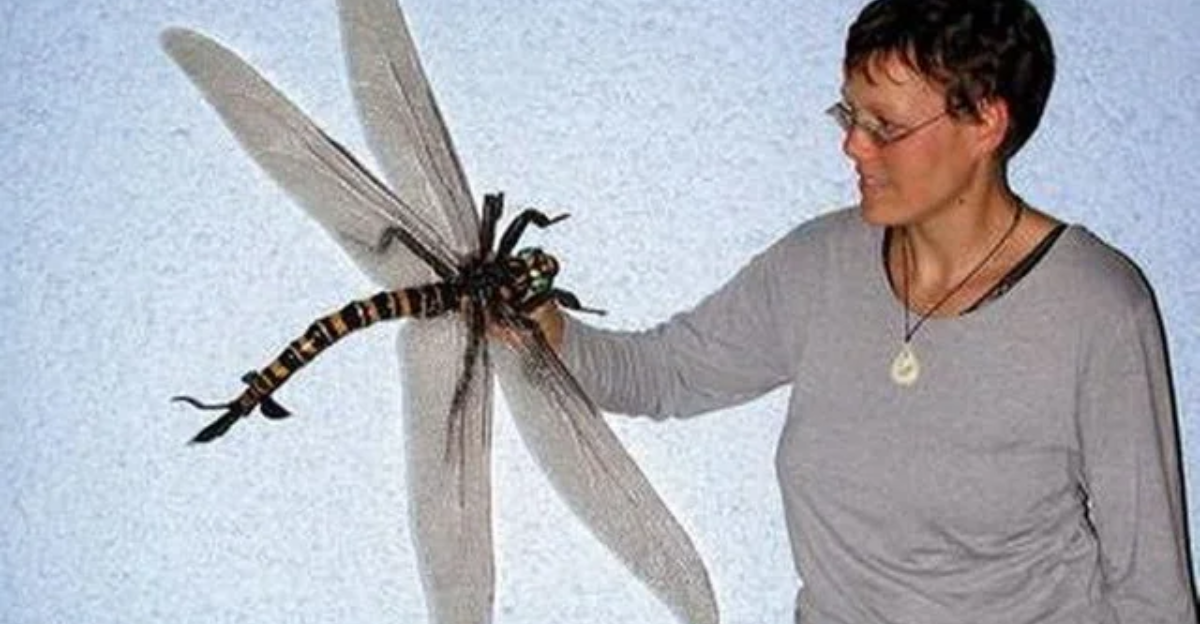
Meganeura was a genus of giant insects resembling modern dragonflies but with wingspans reaching up to 70 centimeters. Living during the Carboniferous period, about 300 million years ago, these insects thrived in oxygen-rich environments that supported their large size.
As aerial predators, Meganeura likely fed on other insects and small amphibians. Their impressive wingspans and hunting capabilities made them formidable flyers of their time.
The existence of such large insects highlights the unique atmospheric conditions of the Carboniferous period and the diverse forms life has taken throughout Earth’s history.
5. Dunkleosteus — The Armored Fish with a Powerful Bite
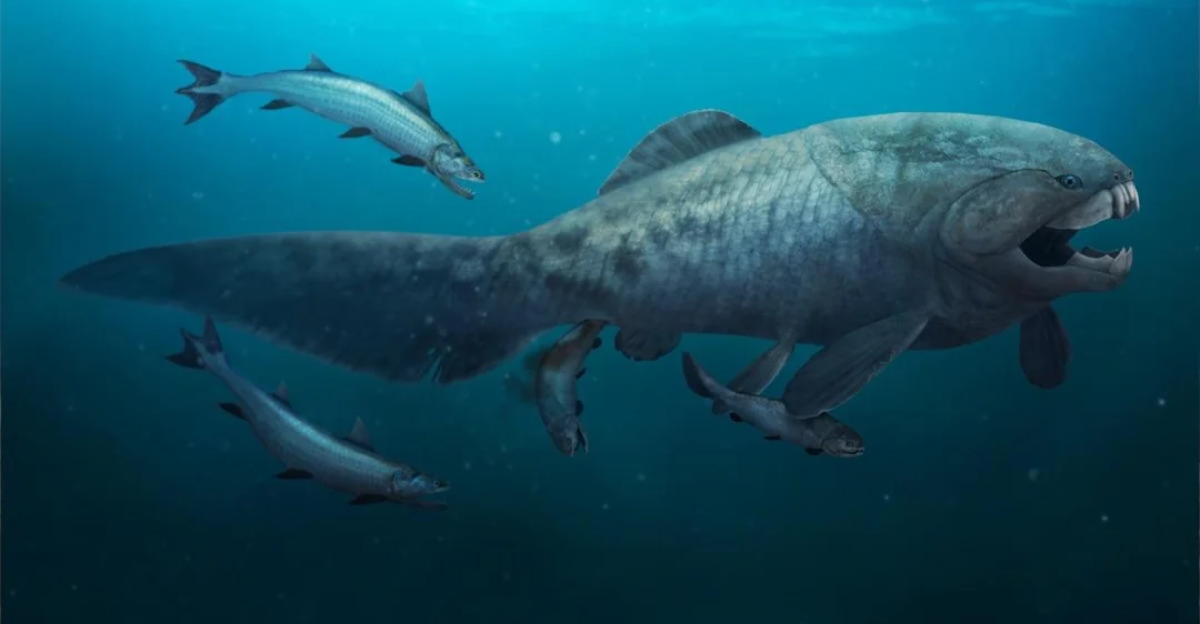
Dunkleosteus was a massive, armored fish that lived during the Late Devonian period, around 358–382 million years ago. It could grow up to 10 meters in length and weighed several tons. Instead of teeth, it had sharp bony plates that formed a beak-like structure capable of exerting tremendous bite forces.
As an apex predator, Dunkleosteus fed on other fish and marine creatures, using its powerful jaws to crush through armor and bone. Its heavily armored head and rapid jaw movement made it one of the most formidable predators of its time.
Dunkleosteus exemplifies the early evolution of jawed vertebrates and their dominance in ancient seas.
6. Hallucigenia — The Spiky Worm-Like Creature
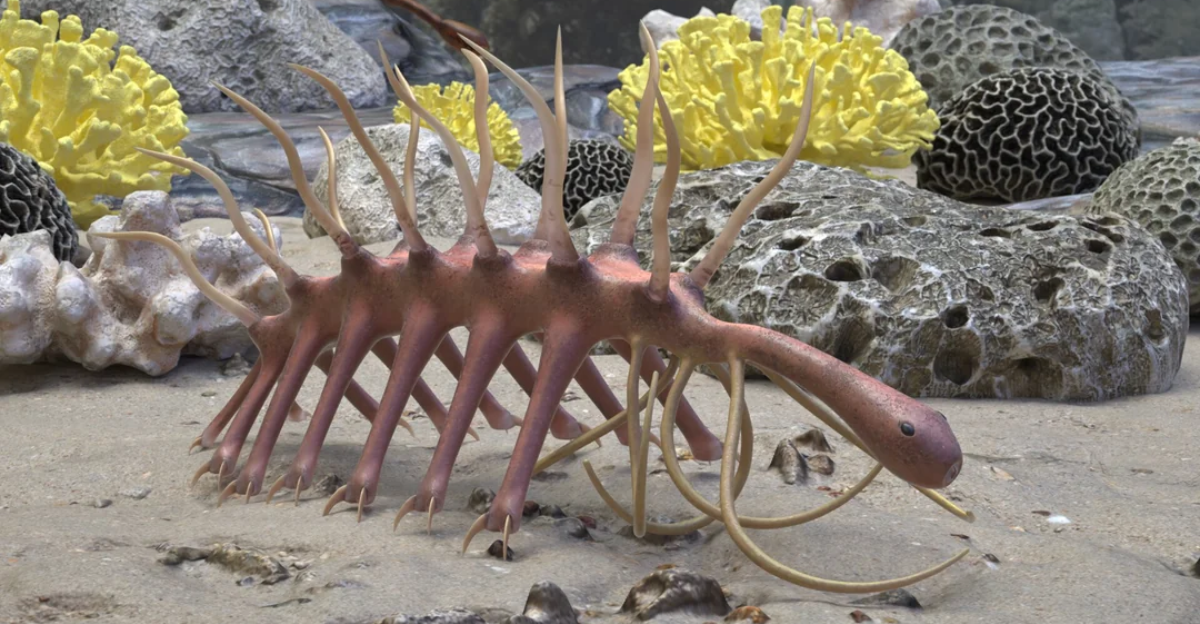
Hallucigenia is a genus of worm-like creatures from the Cambrian period, known for their bizarre appearance. Measuring just a few centimeters long, they had elongated bodies with pairs of spines on their backs and tentacle-like appendages on their undersides, which they likely used for locomotion.
Initially, scientists struggled to determine which end was the head and which was the tail, leading to various reconstructions. Recent studies have provided clearer insights into its anatomy and evolutionary relationships.
Hallucigenia’s unique morphology offers a glimpse into the diversity of early multicellular life and the experimental nature of evolution during the Cambrian explosion.
7. Deinotherium — The Hoe-Tusked Elephant
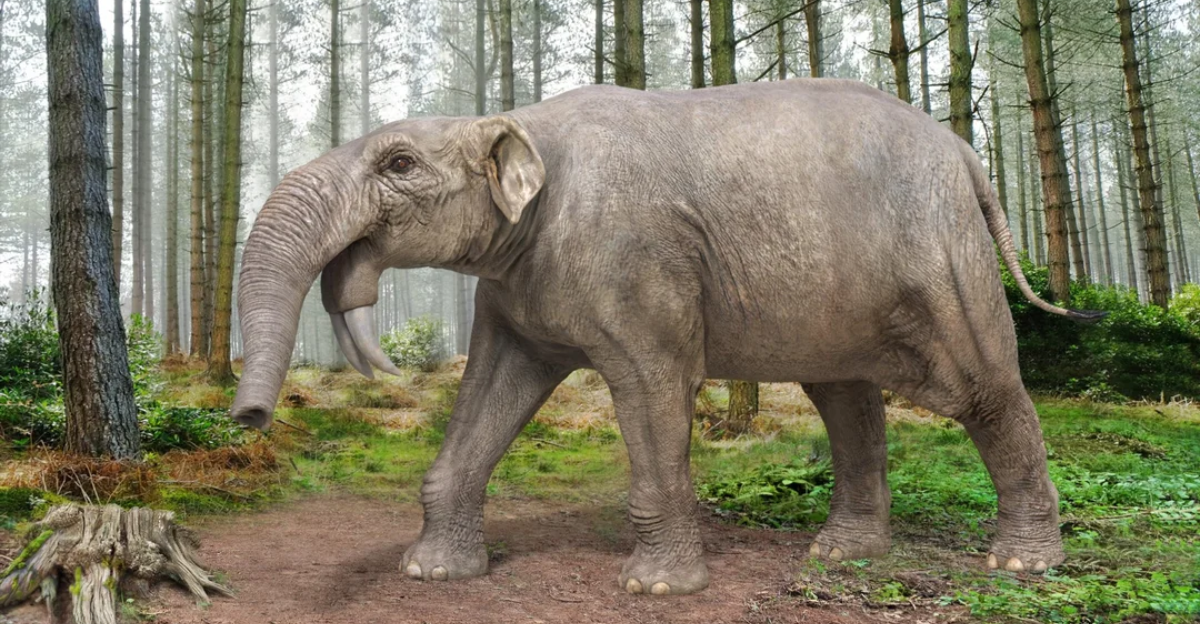
Deinotherium was a genus of large prehistoric relatives of modern elephants that lived from the Miocene to the Pleistocene epochs. They stood up to 4 meters tall at the shoulder and had downward-curving tusks attached to the lower jaw, resembling a hoe.
These tusks may have been used for stripping bark from trees or digging for roots and tubers. Fossils of Deinotherium have been found across Africa, Europe, and Asia, indicating a wide distribution.
Their unique tusk orientation and massive size make Deinotherium a fascinating subject in the study of proboscidean evolution.
8. Titanoboa — The Giant Snake
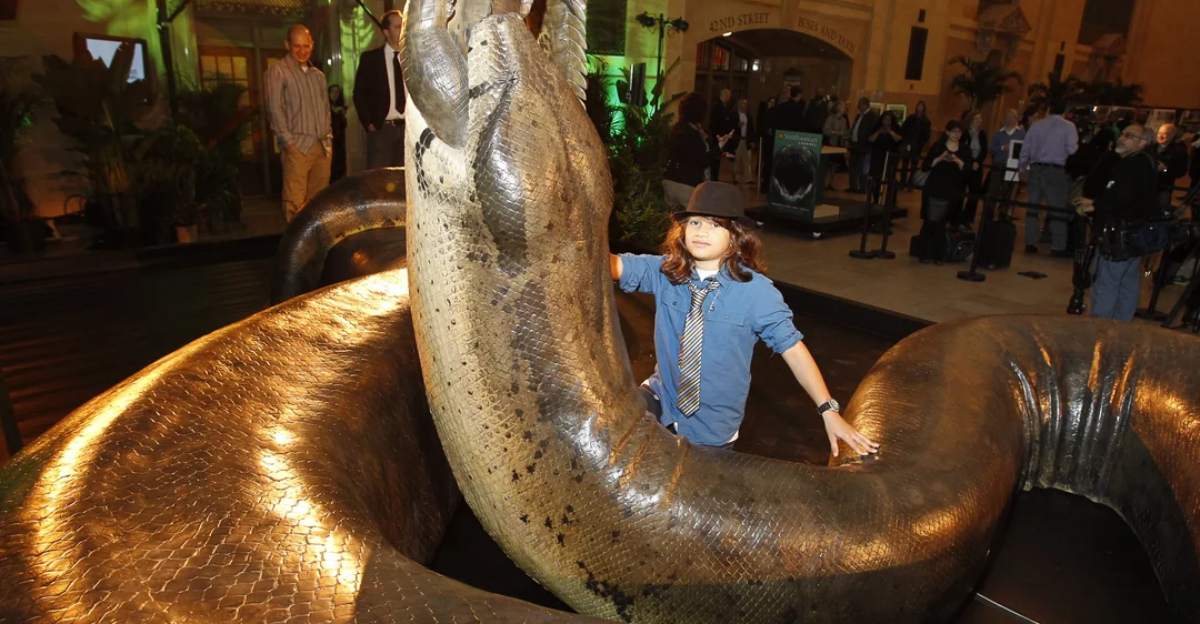
Titanoboa was the largest snake ever discovered, living approximately 60 million years ago during the Paleocene epoch. It could reach lengths of up to 13 meters and weigh over a ton. Titanoboa inhabited warm, humid tropical forests in what is now South America.
As a top predator, it likely preyed on large fish and possibly other vertebrates, using constriction to subdue its prey. Its discovery has provided valuable insights into the climate and ecosystems of the Paleocene.
Titanoboa’s immense size and predatory nature highlight the diverse and often extreme forms life has taken throughout Earth’s history.
Embracing the Bizarre Diversity of Prehistoric Life

The prehistoric world was filled with an astonishing array of creatures, many of which defy our expectations and challenge our understanding of evolution. From the five-eyed Opabinia to the massive Titanoboa, these animals showcase the incredible diversity and adaptability of life on Earth.
Studying these ancient organisms not only satisfies our curiosity but also provides insights into the processes that have shaped life over millions of years. They remind us that the history of life is full of surprises and that evolution often takes unexpected paths.
As we continue to explore the fossil record, who knows what other bizarre creatures await discovery?
Explore more of our trending stories and hit Follow to keep them coming to your feed!

Don’t miss out on more stories like this! Hit the Follow button at the top of this article to stay updated with the latest news. Share your thoughts in the comments—we’d love to hear from you!







